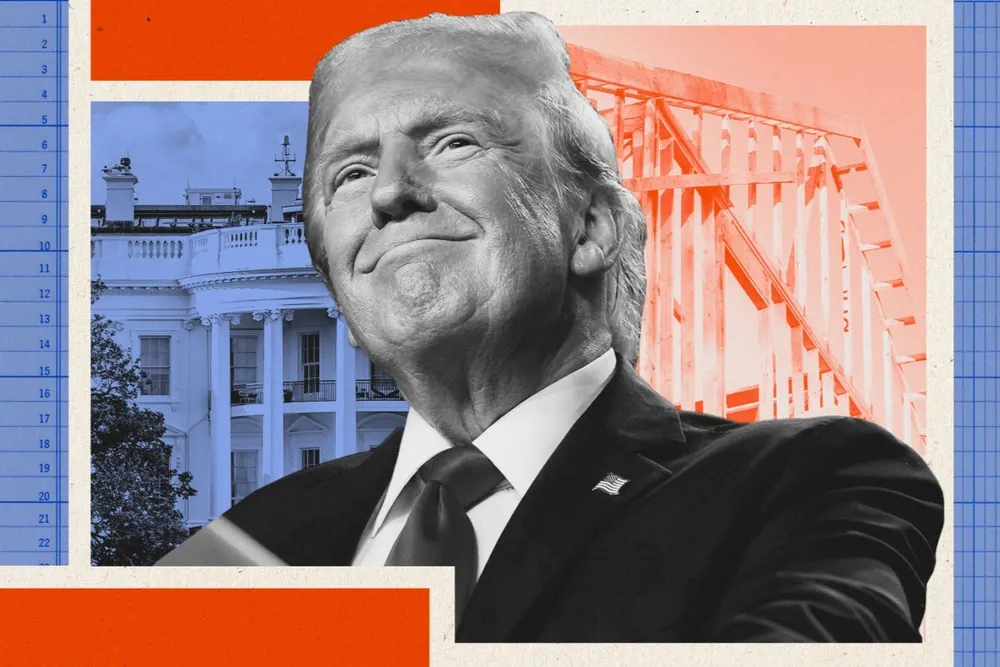
How Has the World Changed Since 2020?
The geopolitical landscape has undergone substantial shifts in the four years since Donald Trump’s departure from the White House. One of the most significant events has been the Russia-Ukraine conflict, which began in February 2022. This war has deeply impacted European security and the international order, leading to a realignment of global power dynamics. During this period, Russia and China have forged stronger ties, emerging as a new geopolitical axis that could challenge Western dominance.
Global alliances have also seen considerable changes. NATO countries have increased defense spending, reflecting a heightened awareness of security threats in Europe. In the Indo-Pacific region, the formation of AUKUS (the trilateral security pact between Australia, the United Kingdom, and the United States) and the strengthening of U.S.-Japan-South Korea relations have added new dimensions to the regional security architecture.
Meanwhile, the global trend towards "de-risking" and diversifying supply chains has prompted a shift in investment and trade. This trend, often referred to as "China + 1" or "regionalization," has encouraged multinational corporations to prioritize supply chain stability over purely low production costs. This shift has opened up new development opportunities for Southeast Asian economies, as they are well-positioned to play a more significant role in the restructured global economic landscape.
In the Asia-Pacific region—a key arena for strategic competition among major powers—the security and economic environment has become increasingly complex. Traditional issues like territorial disputes are now interwoven with new challenges such as technological competition and supply chain reorganization. In this context, countries in the region must make strategic adjustments to safeguard their national interests amidst a rapidly changing environment.
What to Expect from a "Trump 2.0" Foreign Policy?
Donald Trump’s "America First" policy, which characterized his first term, is likely to face a much more complex global landscape in his second. While the core principles of this policy may remain, adjustments will be necessary to reflect new geopolitical realities. Trump’s approach could become more comprehensive, expanding beyond trade deficits to include concerns like technology security and supply chain reliability. With a relatively stronger U.S. economy and a reinforced network of allies, Trump will have more tools at his disposal to pursue his goals.
Regarding the Ukraine conflict, although Trump has claimed he could "negotiate a peace deal within 24 hours," the geopolitical reality is far more complicated. Europe has significantly bolstered its defense capabilities and remains committed to supporting Ukraine, meaning any potential agreement would have to account for NATO allies' interests. However, Trump might leverage the U.S.’s status as an energy superpower to pressure Ukraine into negotiations, potentially expediting an end to the conflict.
In the Middle East, Trump’s foreign policy is expected to focus on containing Iran’s influence and reviving negotiations for normalization agreements between Israel and neighboring countries. Unlike President Biden’s administration, Trump may adopt a more aggressive stance in supporting Israeli military actions and could push for a tougher campaign against Iran-backed forces in the region.
Implications for Vietnam and Southeast Asia
On the economic front, the ongoing restructuring of global supply chains could bring new opportunities for Southeast Asia. Countries with strong industrial foundations, skilled labor, and a stable investment environment will have a competitive edge in attracting new waves of foreign investment. The U.S.'s push to diversify supply chains away from China could lead to the establishment of new production hubs in the region, facilitating industrial upgrades and the growth of high-tech sectors.
In terms of maritime security, Washington is likely to increase freedom of navigation operations (FONOPs) in the Asia-Pacific and enhance defense cooperation with coastal nations. This strategy underscores the importance of regional sea routes to the interests of the U.S. and its allies. However, the greatest challenge for countries in the region will be maintaining a degree of strategic autonomy amid intensifying great-power rivalry.
Given these developments, Vietnam must continue to leverage its independent, multilateral foreign policy to navigate the shifting geopolitical landscape. Expanding diplomatic relations with a wide array of partners will be crucial for enhancing Vietnam’s global standing and national power, thereby enabling the country to adapt to unforeseen international changes. In particular, deepening the comprehensive strategic partnership with the U.S. will be a priority in the coming years, as it holds significant implications for Vietnam’s future.
The Asia-Pacific is now at the center of strategic competition between the world’s major powers. With China’s economic and military influence on the rise, the U.S. and its allies are increasingly focused on counterbalancing Beijing’s ambitions. Trump’s foreign policy is expected to sharpen this rivalry, particularly in technology and trade.
One of the most significant challenges for Southeast Asia, including Vietnam, will be managing economic ties with both the U.S. and China without compromising national interests. The U.S. could intensify pressure on allies and partners to align more closely with its strategic goals, particularly in sensitive areas such as 5G technology, semiconductors, and cybersecurity. For Vietnam, balancing these competing pressures will require careful diplomacy and strategic flexibility.
At the same time, economic decoupling between the U.S. and China presents opportunities for Vietnam. Multinational corporations seeking to diversify away from China are likely to view Vietnam as a favorable alternative, especially given its established manufacturing base and trade agreements. However, to fully capitalize on these opportunities, Vietnam must continue improving its investment climate, upgrading infrastructure, and enhancing workforce skills to meet the demands of high-tech industries.




















